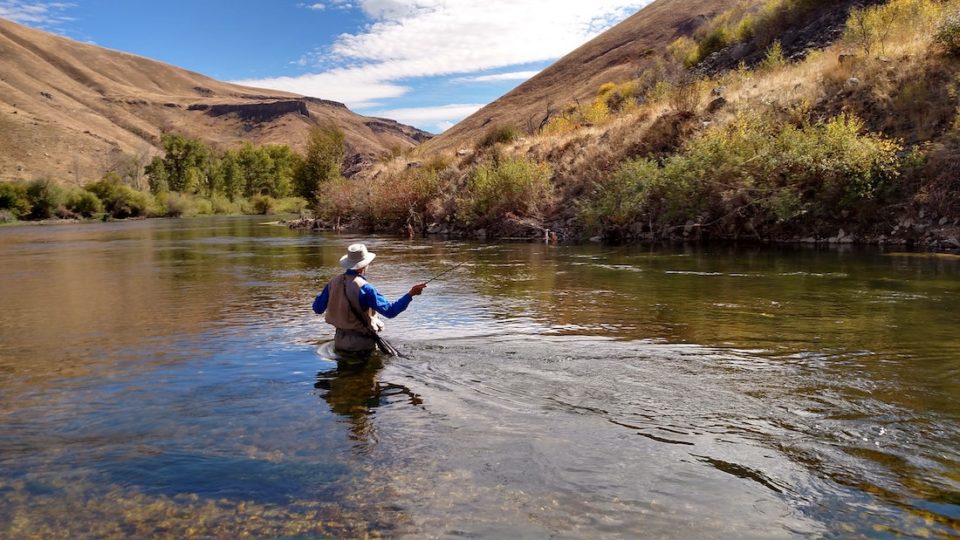Every state in the West has some type of law declaring that its waters belong to the public. But what this means is disputed, and several state supreme courts have had to decide cases that pit streamside landowners against paddlers and anglers.
Recreational users have won most of these cases in the Rocky Mountain states, as courts have decided that public ownership of water gives the public a right to access the state’s waters.
Colorado was the first to put such language in its constitution, and several others followed suit, including Wyoming, New Mexico and Montana. Other states, including Utah, have such language in statutes.
But the beds and banks of many Western streams belong to the owners of adjoining lands unless the land along a stream is government-owned. That leads many landowners to see a stream as part of their property, while paddlers and anglers view it as a public resource.
Recently, the New Mexico Supreme Court further defined access, ruling that the public has the right to stand on privately owned streambeds to boat through or fish — a loss to landowners who want to exclude the public.
New Mexico decided the first case about recreational use of water that flows through private land in 1945, when its supreme court ruled that the public has a constitutional right to float on waters that are owned by the public. Dissenting judges complained about destroying property rights, but the precedent was set.
Other state courts have reached similar decisions about their state’s public ownership laws. First, Wyoming, then Idaho, Utah and Montana all found that the public has a right to float the state’s waters because the public owns them. But specifics vary, especially about public rights to touch privately owned streambeds. For example, there is a right to wade in Montana but not Wyoming.
Only Colorado rejected public access, as a divided court in 1979 saw public ownership of water as less meaningful than ancient property rules favoring landowners. Because Colorado has no public right to touch private streambeds, an angler is suing to have the upper Arkansas River declared “navigable” — meaning the state would own its beds and banks.
This issue flared up in New Mexico when the State Game Commission under then-Gov. Susana Martinez (R)) adopted a rule allowing a landowner to close off waters flowing through their property if the commission approved the landowner’s petition.
The rule was always legally dubious, but it took New Mexico’s recent Supreme Court decision to overturn it. The court ruled unanimously that the right of public access includes walking and wading on privately owned streambeds as “reasonably necessary” for fishing and other recreational uses.
Not surprisingly, New Mexico’s recreation community loved the recent decision, while landowners did not. Gov. Michelle Lujan Grisham (D) seemed relieved that the issue was decided, though not necessarily thrilled with the outcome.
Her spokesperson told the Albuquerque Journal that the ruling “provides needed clarity on the issues of stream access.” The governor had not advocated for public access, and was widely seen as having axed two Game Commissioners for their pro-access positions.
State elected officials and agencies have rarely led the charge for public access in the Rocky Mountain states. Except for the early New Mexico case, all lawsuits have been brought by recreational users, not state agencies. Sadly, elected officials are often reluctant to support access despite the popularity of outdoor recreation, perhaps because of the influence of wealthy streamside landowners.
That leaves the courts to play a crucial role, although they do not always get the last word. In Utah, the legislature soon curtailed the public rights recognized by its supreme court in 2008.
Disagreements continue about what waters are, and should be, open to the public. But except in Colorado, the Rocky Mountain courts have not allowed landowners to exclude recreational users, largely because the law declares that water belongs to the public.
The recent New Mexico decision is the latest to affirm that public ownership means public access.
Reed Benson is a contributor to Writers on the Range, writersontherange.org, an independent nonprofit dedicated to spurring lively conversation about the West. He is a longtime kayaker and a law professor at the University of New Mexico, focusing on water law and policy.


3 comments
Thanks for sharing. I read many of your blog posts, cool, your blog is very good.
ZxinyXYJNCSc
AVBezoDlxZHtQELc